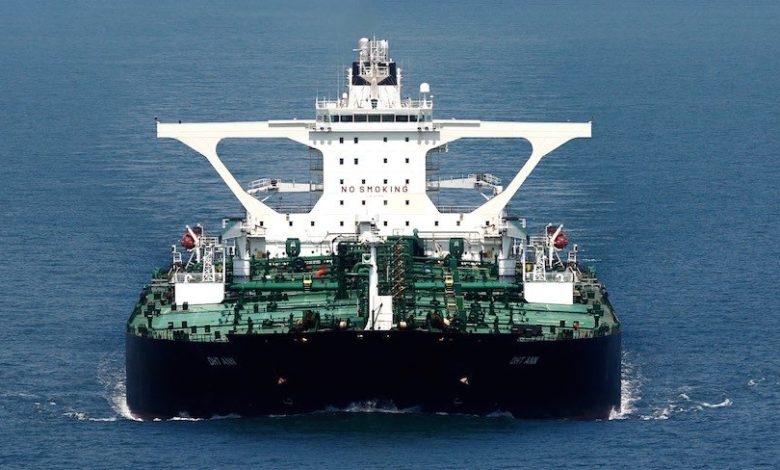Tanker torpor

What would it take to see VLCC rates pick up again? Jason Jiang explores.
The VLCC market has taken a sharp turn downwards in 2016. Higher ship deliveries, weaker global oil demand and import growth, high stocks, lower refining margins have all contributed to a broad deterioration in the tanker freight market.
According to the latest Fearnley Medium Term Tanker Market Outlook 2016-2021 report, the shipping consulting firm doesn’t believe in extraordinary demand from the second half of 2016 through 2017, perhaps also the first half of 2018, and it also maintains its belief that tanker earnings will weaken for the first half of the forecast period.
So, what would it take to see VLCC rates pick up again?
Dag Kilen, senior shipping analyst at Fearnley Consultants, reckons that to see the VLCC rates soaragain, the orderbook through 2017 needs to be cleared, plus a reversal in operation factors such as ballast speed and waiting days. Oil stocks need to be cleared from current high levels as refinery margins and imports will be limited and dampen tanker demand, while oil prices need to recover to levels that support investments in new oil production.
“We believe this level is between $60 and $70 per barrel currently. As crude tankers are transporting volumes produced rather than volumes consumed, this is considered crucial. A further prolonged period with low oil prices is believed to eventually create a shortage of crude oil and could eventually cause a spike in oil prices rather than a gradual recovery,” Kilen says.
“A spike is not wanted by anyone as it could mean demand destruction. A gradual recovery for oil prices is therefore considered best for all parties, whether that is producers, consumers or tanker owners,” Kilen adds.
Rajesh Verma, Drewry’s tanker shipping lead analyst, reckons the two main reasons behind the recent decline in VLCC rates are seasonal weakness in demand and rising supply.
“For any significant recovery in the freight rates this year, factors which could curb the tonnage supply would be crucial,” Verma says.
“If the delivery slippages surges on account of tight financial conditions of many Asian yards, it might curb the tonnage supply growth. Further, if by any means oil marker’s surplus increases again – due to continued pumping by the Middle East producers and/ return on Libyan and Nigerian production in the short term – it would lead to an increase in floating storage of oil, which in turn will absorb some tonnage from the oversupplied market.”
Verma doesn’t expect any strong surge in demolition activity this year as vessel earnings are still positive and the VLCC fleet is young.
London-based Maritime Strategies International’s 2016 Q3 tanker report shows that the third quarter of the 2016 has been the retreat in the tanker market turn into something of a rout. As earnings in other major shipping sectors crumbled under the twin powers of rising fleet growth and slowing demand, tankers did appear to be a bastion of fortitude.
“How could the VLCC market see a rapid reversal of fortunes? We would need to see Chinese crude buying accelerate on a monthly basis going into the fourth quarter. However, in August Chinese crude imports hit their second highest monthly level ever and still markets remained in the doldrums,” says Tim Smith, senior analyst at Maritime Strategies International.
Smith believes demand improvements here must be accompanied by other regions, particularly South Korea which has not seen growth in crude imports matching the strong increases seen in 2015.
“Asian refining margins must break out of their stupor – this will only occur if crude prices remain low and local demand sees a strong seasonal pick up,” Smith predicts.
“For VLCC rates to spike in the short-term, a combination of factors – such as extreme port delays in the Middle East and/or Asia, a rapid decline in Chinese domestic oil production and an extreme seasonal increase in Asian demand in Q4 – would be necessary to counter what we expect to be a further 35-40 new VLCCs hitting the water over the next six months. Needless to say, any action to curb production by major exporters would fail to materialise,” Smith adds.
Smith reckons the odds are stacked against a strong revival in the VLCC market but MSI does expect to see some recovery in rates in the fourth quarter from the lows of third quarter but any gains are expected to be limited with the six-figure dollar a day spot earnings of December 2015 unlikely to be repeated.
Erik Broekhuizen, head of tanker research at Poten & Partners, believes that the market will eventually turn back up. According to Broekhuizen, in the short term the market could be strengthened as winter demand kicks in. A return of contango in the oil market could bring back floating storage and any type of major supply disruption as a result of a geopolitical events in the Middle East will also cause the market to spike. The return of floating storage is unlikely in the short term, while geopolitical events are inherently unpredictable.
In the longer term, things are likely to improve. Oil demand will eventually recover and VLCCs are the most efficient and economical tankers to move crude oil over long distances. Regulatory changes such as mandatory Ballast Water Treatment Systems and (possibly) scrubbers to deal with low sulphur fuel requirements are expensive and could stimulate the scrapping of older tonnage in the coming years (especially if rates are low). At the same time, lack of financing and poor markets have already slowed new orders, so deliveries of new tonnage will be lower in the years to come. All these factors combined will restore the supply demand balance for VLCCs… eventually.
